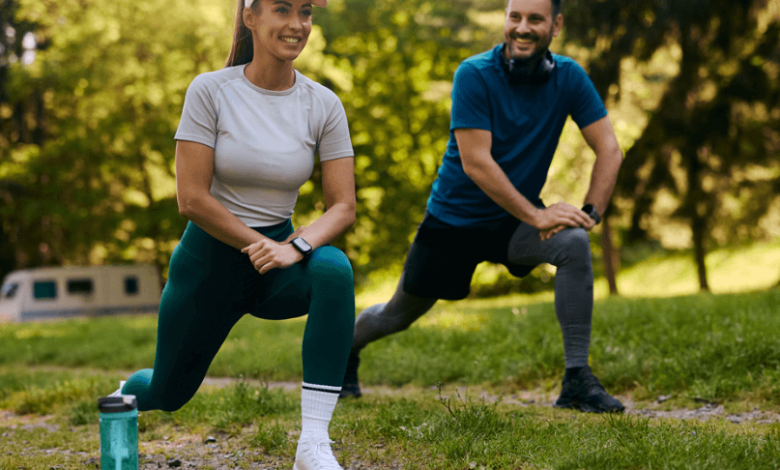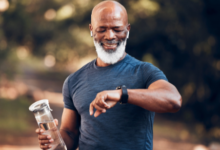Train for Life: A Guide to Functional Movement

Functional fitness focuses on improving strength, stability, and mobility to enhance everyday movements like lifting, bending, and carrying. Instead of prioritizing aesthetics or speed, it trains your body for real-world activities, making daily life easier and reducing injury risk. This guide covers essential movement patterns to help you build a stronger, more capable body.
What Are the Core Movement Patterns?
Functional fitness is built around a few key movements that mimic our natural, everyday actions. Mastering these patterns is the secret to building practical strength that serves you both in and out of the gym. There are five primary patterns that form the foundation of most functional training programs.
1. The Squat (Level Changes)
Squatting is the simple act of lowering your hips from a standing position and then pushing back up. You do it every time you sit in a chair, get into your car, or pick something up off the floor. It’s a compound movement that engages your entire lower body—quads, hamstrings, glutes—and your core.
Why it’s essential: Proper squatting mechanics are crucial for maintaining hip mobility and lower back health. Strong legs and glutes, developed through squatting, provide the power for countless activities and protect your joints from strain.
2. The Hinge (Bending)
The hinge involves bending at your hips while keeping your back straight. Think about picking up a heavy box, deadlifting, or even just bending over to pet your dog. This movement primarily targets the posterior chain: the glutes, hamstrings, and lower back.
Why it’s essential: A strong hinge pattern is your best defense against lower back pain. Learning to lift with your hips and legs instead of your back protects your spine from injury and builds powerful glutes and hamstrings.
3. The Push (Pushing)
Pushing movements involve moving a weight away from your body or moving your body away from an object. This can be horizontal, like a push-up or pushing a grocery cart, or vertical, like lifting a box onto a high shelf (an overhead press). These exercises primarily work the chest, shoulders, and triceps.
Why it’s essential: Pushing strength is fundamental for upper body function. It allows you to handle heavy objects safely and builds stability in your shoulder joints, which are among the most mobile and injury-prone joints in the body.
4. The Pull (Pulling)
Pulling is the opposite of pushing. It involves bringing a weight toward your body or pulling your body toward an object. Examples include opening a door, starting a lawnmower, or doing a pull-up. These movements target the back, biceps, and shoulders.
Why it’s essential: A strong back is crucial for good posture and a healthy spine. Pulling exercises balance out the strength developed by pushing movements, creating a stable and well-rounded upper body. This balance helps prevent shoulder injuries and postural problems.
See also: Home Interior Design Hong Kong: Creating Spaces That Reflect Your Lifestyle
5. The Carry (Locomotion)
Carrying is as simple as it sounds: picking up a heavy object and walking with it. Think of carrying suitcases, grocery bags, or your toddler. This movement challenges your grip, core stability, and overall endurance.
Why it’s essential: The loaded carry is one of the most functional exercises you can do. It teaches your core to stay braced and stable while your limbs are in motion, which is critical for protecting your spine during dynamic activities. It also builds incredible grip strength, which is linked to overall health and longevity.
Benefits of Functional Training
Integrating these movement patterns into your routine offers benefits that extend far beyond aesthetics.
- Improved Strength and Endurance: You’ll build practical strength that makes everyday tasks feel effortless.
- Enhanced Balance and Coordination: Functional exercises often require multiple muscle groups to work together, improving your body’s overall coordination and stability.
- Reduced Risk of Injury: By strengthening your muscles in patterns that mimic real-life movements, you prepare your body to handle unexpected physical stress, protecting your joints and spine.
- Better Posture: Strengthening your core and back muscles helps you stand taller and sit straighter, alleviating common aches and pains associated with poor posture.
Sample Functional Exercises
Ready to get started? Here are some simple yet effective exercises for each movement pattern. You can do many of these at home with minimal equipment.
- Squat: Goblet Squat. Hold a dumbbell or kettlebell close to your chest. Stand with your feet shoulder-width apart and lower your hips as if sitting in a chair. Keep your chest up and back straight. Push through your heels to return to the starting position.
- Hinge: Kettlebell Swing. Stand with your feet slightly wider than your shoulders, holding a kettlebell with both hands. Hinge at your hips, letting the kettlebell swing back between your legs. Drive your hips forward powerfully, using the momentum to swing the kettlebell up to chest height.
- Push: Push-Up. Start in a plank position with your hands directly under your shoulders. Lower your body until your chest nearly touches the floor, keeping your elbows close to your body. Push back up to the starting position. (Modify by doing them on your knees if needed).
- Pull: Dumbbell Row. Place one knee and hand on a bench, holding a dumbbell in the opposite hand. Keeping your back flat, pull the dumbbell up toward your chest, squeezing your back muscles. Lower it with control.
- Carry: Farmer’s Walk. Hold a heavy dumbbell or kettlebell in each hand. Stand up tall, engage your core, and walk for a set distance or time. Keep your shoulders back and avoid leaning to one side.
Training Tips for Success
To get the most out of functional training, keep these tips in mind:
- Form First, Weight Second: Master the correct form for each exercise before adding weight. Poor form can lead to injury and negate the benefits.
- Start Slow and Progress Gradually: Begin with lighter weights or just your body weight. As you get stronger, you can increase the weight, reps, or difficulty of the exercises.
- Listen to Your Body: Pay attention to how you feel. It’s normal to feel muscle soreness, but sharp pain is a signal to stop.
- Stay Consistent: Aim for consistency over intensity. A well-rounded routine performed a few times a week is more effective than one brutal workout every two weeks. If you need accountability, consider joining a program or group fitness classes like those in Lehi to stay motivated.
Conclusion
Functional training focuses on improving movement and real-world strength through exercises like squatting, hinging, pushing, pulling, and carrying. It helps build a strong, resilient body for everyday life, boosting confidence and vitality.






